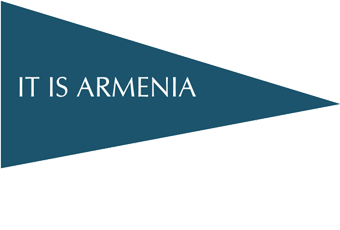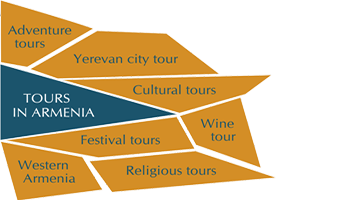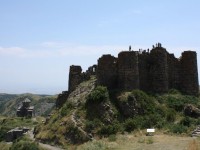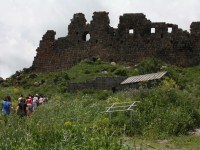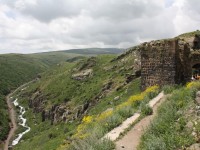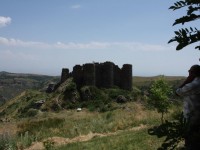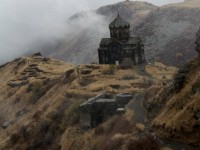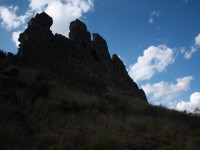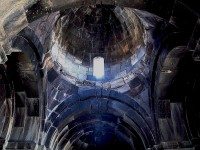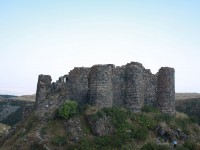Amberd
The Amberd is located at the bottom of Mount Aragats, 7 km north from the village of Byurakan, in canton Aragacotn, the historic province of Ayrarat, 2300 meters above sea level. The castle name is explained as a strong fortress. The castle is at the junction of the rivers Arkashen and Amberd on the high triangular cape. Traces of the Stone Age settlement at Amberd’s area have been found. The first castle was built here in the period of the Kingdom of Ararat. The current castle was built in the 7th century by the counts Kamsarakan. Later, in the 10th century it passed to Pahlavunis and was considered to be one of the most important defensive structures of Bagratunis kingdom. At the end of the 12th century Amberd was liberated by Zakarians and devolved to Vachutyan government house, who converted the fortress into their administrative center. In 1236, the Mongols conquered and destroyed Amberd, a short time later the Vachutyans renovated it again, but shortly after that the castle was destroyed during Tamerlane's invasion and lost its importance. The fortress had the shape of a triangle. There were some sections of the enclosures fortified with the pyramids. The pyramids of the fort were built taking into consideration the area characteristics and created a formidable defense system with the rational flow of revenues to roads. St. Astvatsatsin Church (St. Mary's Church) is located out of the chateau, at the castle's southern outskirts, and was built in 1026 by Commander Vahram Pahlavuni. It is one of the first churches having double vestries in its four corners of cross wings and has a high acoustics, which provides vessels, placed under the roof. The rectangular plan includes sanctuary with its eastern side senior table and double vestries in four corners. Inwardly circular, outwardly 12 hedral drum is adorned with a pair of pilasters and covered by the hood which reminds an umbrella. It is remarkable and is the first example of such roofing. On the inside wall of the church, there is the construction protocol about the church building. The Church's outward architecture is simple and homely. There is a 10-11 centuries bath outwards the castle near the southern enclosure, with its bathroom and dressing room. The walls of the bathroom were decorated with frescoes.






